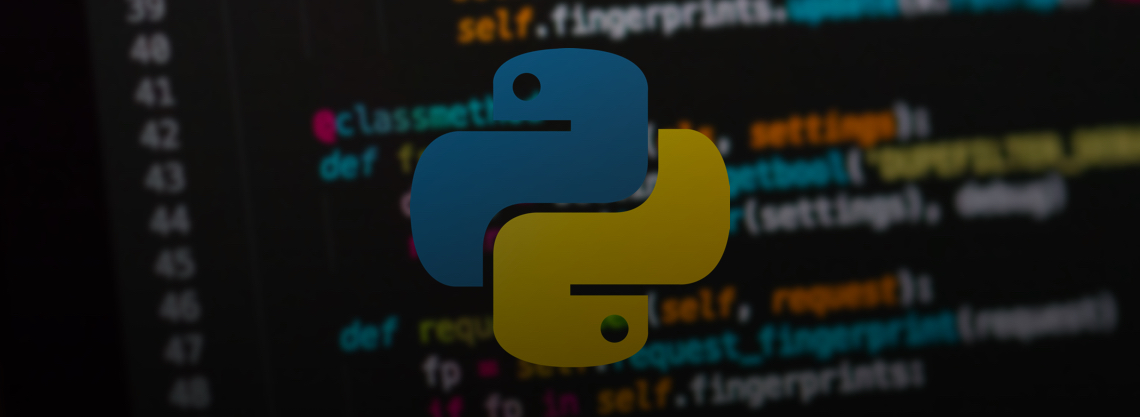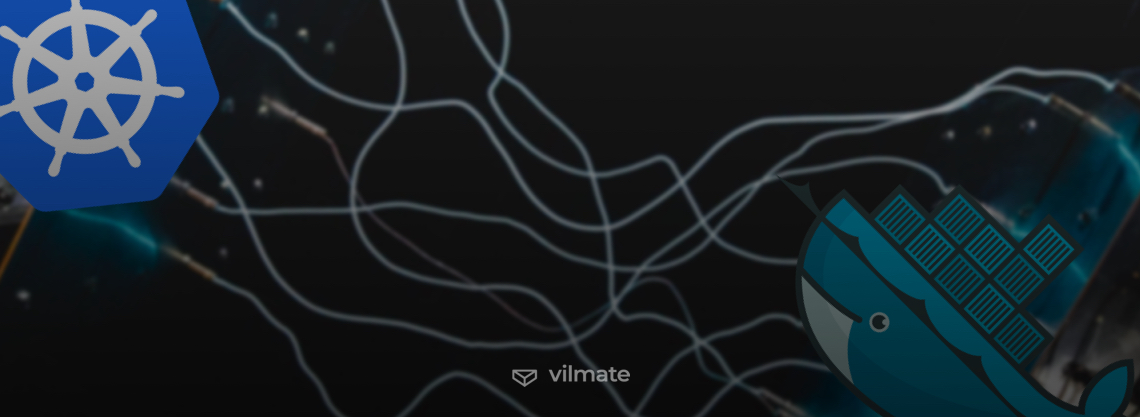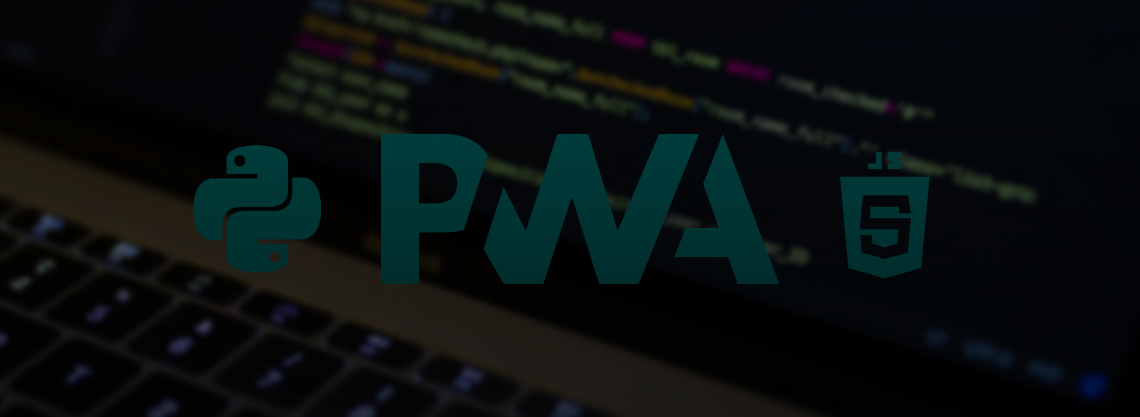According to the recent survey report by W3Techs, PHP is used by 79.0% of all the websites. These results contrast starkly with what so many in the IT community insist on – that PHP is dying. These findings make the topic open for discussion. In particular, this includes the technologies and tools that are commonly used in PHP projects. And it is difficult to imagine any popular programming language without a framework built on top of it. Python goes with Django, Node.js goes with Express, and the perfect match for PHP is Laravel.
Laravel is considered prominent among the other PHP frameworks. As a company that has a number of ongoing PHP projects, Vilmate, among others, delivers Laravel web development services to our clients. We understand how hard it may be at times to choose the right technology stack for your future software development project. Therefore, we wish to make some things clearer by providing a brief Laravel review. Instead of desperately looking for the reasons why Laravel is bad, we are going to give you 10 reasons to opt for the Laravel framework. Why use Laravel? Why is it better than other frameworks? Let’s find out!
What is the Laravel framework?
Why use a PHP framework like Laravel, you must be wondering. But first things first – in order to get everything right, let’s define what a framework is in programming terms and how it is useful.
In the realm of software development, a framework is a piece of reusable software that’s been developed to help developers create their applications. It provides specific functionality that one is free to use in their program to expand capabilities and boost performance. Thus, the intention of a software framework like Laravel is to prevent developers from reinventing the wheel by offering them ready-made solutions. These solutions vary in complexity from providing assistance in easing routine tasks like routing, authentication, sessions, and caching to presenting powerful tools needed for massive and robust applications development.
Laravel is exactly what the definition of a framework suggests. It was released in 2011 as an open-source framework for web app development that follows the model–view–controller (MVC) architectural pattern. Laravel has brought a range of benefits on the table and, since then, it has constantly been gaining traction. As of today, 2020, Laravel is the most widely acknowledged PHP framework among GitHub users with 60k+ stars. Meanwhile, a PHP framework that ranks second in popularity, Symfony, has only a third as many stars there even though it had been released 4 years earlier. Not to mention CodeIgniter, whose repository has been starred only 18k times and other progressively less popular PHP frameworks. Thus, the current status of Laravel suggests it has developed to become a go-to framework for web developers all over the world.
Be it Laravel, Symfony, or CakePHP, the employment of a framework consistently allows shifting the focus on the business logic of an app rather than putting all the effort into coding. It increases the speed of development, allows for more stability, offers improved security features, and significantly eases the burden of code maintenance. However, despite the fact that Laravel still has its pros and cons, it is the number one PHP framework for many developers. Nothing comes from nothing. And there are many different functions built into Laravel that will save your time and energy and take care of a range of low-level details providing an elegant MVC architectural pattern.
Why Laravel: Top 10 advantages of the framework
Even given all the choices for PHP web development frameworks, developers prefer Laravel to all others. So, why use Laravel, and what makes it so special? To begin with, Laravel packs all the functionality one may need to build a modern PHP application. It focuses on the end-user, making it easier for them to get the work done. Below in our brief Laravel tutorial, we’re going to analyze in what specific ways Laravel aids developers in building robust web apps and dynamic websites. These are 10 benefits of Laravel that allow calling it the best PHP framework:
1. The Model-View-Controller architectural pattern support
The first and one of the most fundamental advantages that justify the much higher popularity of Laravel compared to other PHP frameworks is that it follows the best development practices. The application of the Model-View-Controller-based software design pattern is a good case in point.
The model-view-controller (MVC) architectural pattern, in the first place, ensures clarity between logic (Model) and presentation (View) through the lens of Controller, which results in overall performance improvement, better documentation readability, and more.
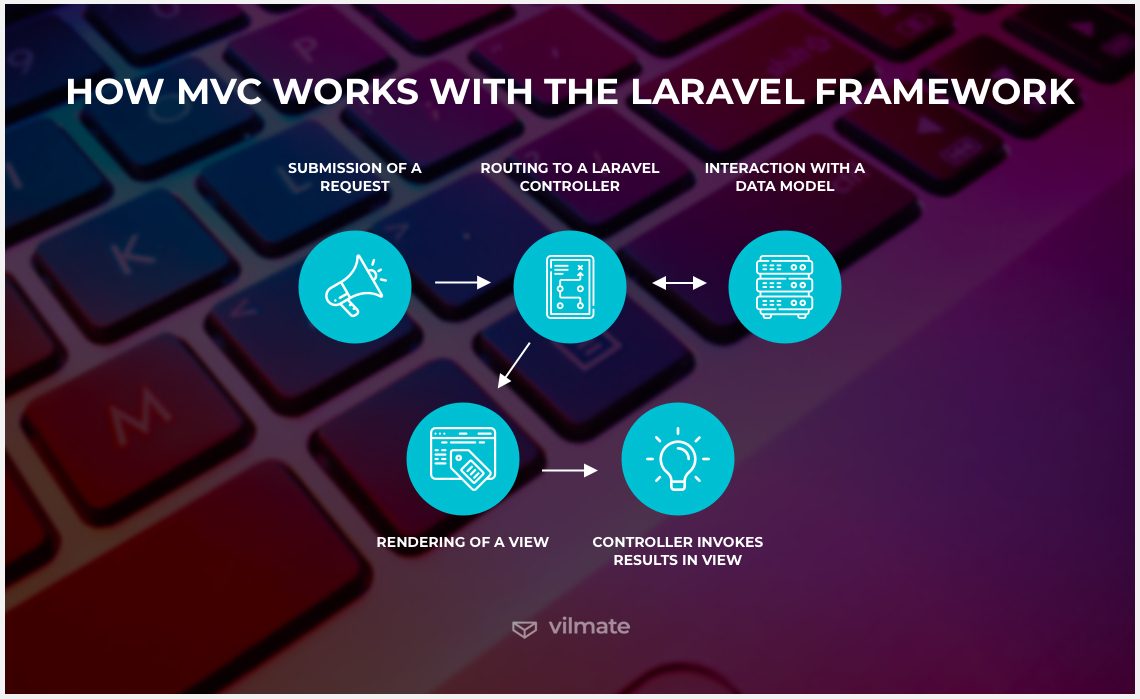
Generally speaking, the MVC architecture allows for exceptional support and performance. By default, Laravel comes with the model-view-controller (MVC) architectural pattern. So, it offers developers an extremely convenient way to build both large- and small-scale business applications out-of-the-box. Using MVC architecture, they can write a more simply and clearly structured code that is convenient to work with. This is the benefit that cannot be underestimated, especially when a project is complex and involves large volumes of code-writing.
The model-view-controller pattern includes many built-in functions. The most outstanding ones are a complete authentication system, pagination, Eloquent ORM (Object Relational Mapping), streamlined database migration, and pagination (some of them we are going to discuss in more detail below.) As a result, for example, MVC allows quickly finding files in their logical directories even when you work on a large software project or easily interacting with databases with the help of Eloquent ORM. With MVC, a PHP software engineer can gain control over how a particular web app presents itself in the real world and then improve it accordingly.
2. Object-oriented libraries
The Laravel framework not only allows structuring code according to the principles of MVC. This framework also has an expressive, beautiful syntax that makes Laravel object-oriented. Working with this PHP framework, developers also get 20+ pre-installed modular and object-oriented libraries and secondary tools for developing robust web applications. Empowered by them, software developers can adopt the most up-to-date principles of the PHP language to facilitate responsive and modular web app development.
Some of Laravel’s individual modules are so unique that they cannot be found in most other PHP frameworks. Thus, for instance, Laravel’s authentication library allows ensuring security to databases with the help of features like encryption and CSRF protection.
On the other hand, there are a number of libraries that are supported both in Laravel and Symfony. This, as well as the fact that they both follow the MVC design pattern, allows for compatibility of the code written using either of the frameworks. This code can thus be created following the best PHP development practices and, after that, be easily modified and maintained.
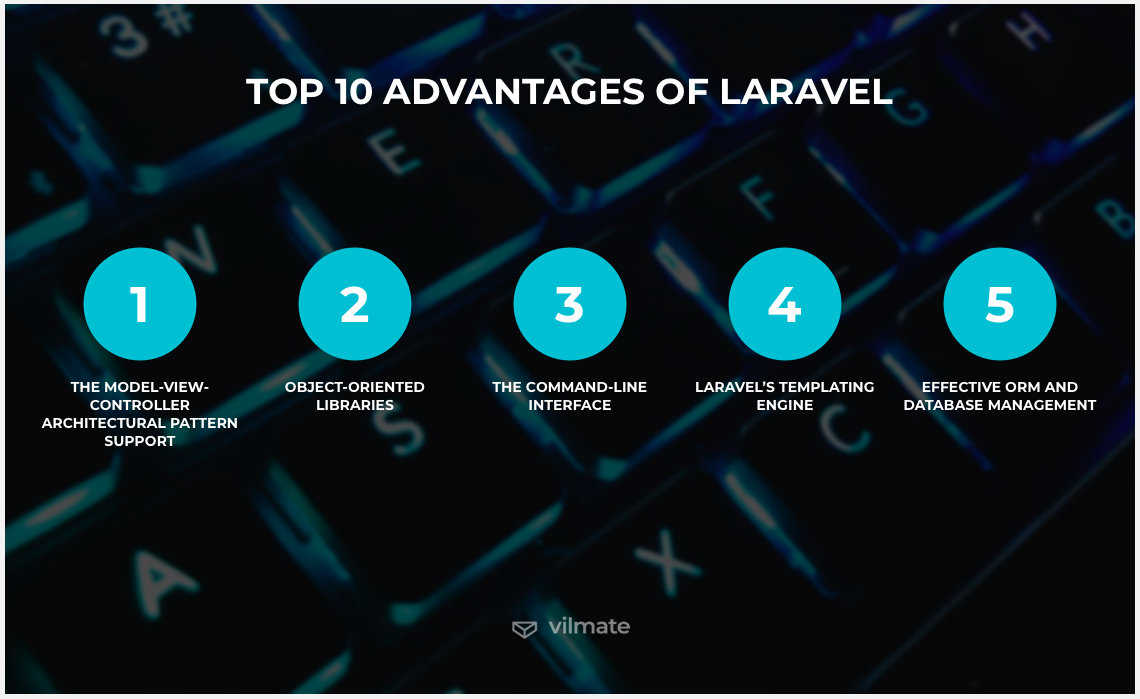
3. The command-line interface
In the context of software development, CLI (command-line interface) programs provide interactive access to functions and services for developers to more easily complete certain programming and maintenance tasks. These programs handle commands in plain text and thus provide service to install, update, and generally make development processes more robust. Artisan is the Command Line Interface and a global command-line tool for Laravel.
By including CLI in the framework, the creators of Laravel, sure enough, didn’t reinvent the wheel. Many practical solutions are either based on or pattern themselves after the already existing ones. In the case of software frameworks, some best practices are adopted from other frameworks. Artisan CLI in Laravel is an example of such successful transferring, as fundamentally, Artisan is driven by the Symfony Console component.
Among the common use cases of Artisan, one can single out the management of database migrations, authentication and authorization, publishing of package assets, starting of the Laravel development server, the establishment of scaffoldings for a variety of front-end frameworks, adding of records to a database through seeding, and generation of code for new controllers, models, and migrations. Of course, there are many more helpful commands for building a Laravel application. But what is more important is that developers can implement their own custom commands and thus further extend Laravel’s functionality. Luckily, there is an exhaustive tutorial on how to do that on the official website of the framework.
By such means, the Artisan command-line interface allows making the development process simpler, easier, and faster. It eliminates the need to repetitively execute those tedious coding tasks that are otherwise performed manually.
4. Laravel’s templating engine
Blade templating engine is another reason to call Laravel one of the best PHP frameworks. In simple terms, Blade allows using inbuilt lightweight templates to create class-based components that can be reused anywhere in your PHP application. The primary aim in doing so is to create amazing layouts as a result of taking advantage of dynamic content seeding.
Programming tasks oftentimes require the use of a template engine as a tool that processes the code in the source templates and directs the output of the processing to a corresponding text file or stream.
As Blade deals with views, the corresponding .blade.php file is typically stored in the resources/views directory. Laravel’s in-built templating engine does the job of producing views by compiling the templates into plain PHP code and caching them for improved performance. Unlike other popular PHP templating engines, Blade can combine templates with a data model without adding overhead to the app. This process is also known as template inheritance. In addition, Blade equips Laravel developers with a set of control structures such as conditional ‘if’ statements, loops, and comments. These are counterparts, internally mapped to PHP.
It all makes Blade so powerful that by merely using pre-designed packages, one can acquire the top-notch website design with the genuinely outstanding layouts ahead of schedule.
5. Effective ORM and database management
The Laravel framework uses an ORM (Object Relational Mapping) called Eloquent, which is, in fact, a huge advantage to keep in mind when deciding what PHP framework to opt for. It is a built-in implementation that is also the best ORM among all other PHP frameworks.
In the first place, Eloquent ORM makes app databases less challenging to interact with. It functions as a convenient, fluent abstract interface facilitating database queries execution. Also, database migration is one of the most in-demand features of the Laravel framework, so many will rest satisfied with how well it optimizes queries execution and how accurately it defines relationships among different entities.
This ORM allows developers to interact with database objects and relationships using beautiful and expressive syntax. Although there is a possibility to maintain a smooth interaction with app database objects using simple PHP syntax without having to code lengthy SQL queries, it also works flawlessly with PostgreSQL and MySQL. In addition, Eloquent will empower a development team to take advantage of Laravel’s ActiveRecord implementation, which basically means that there will be a more natural way of building and customizing Models in Laravel. Eloquent is generally aimed at simple relation mapping between tables for complex cases. As a result, a team is enabled to modify the given database schema, share it among one another, and manipulate across all the database systems.
Last but not least, the Eloquent ORM’s official documentation is comprehensive, so that one won’t get completely lost trying to find their way around.
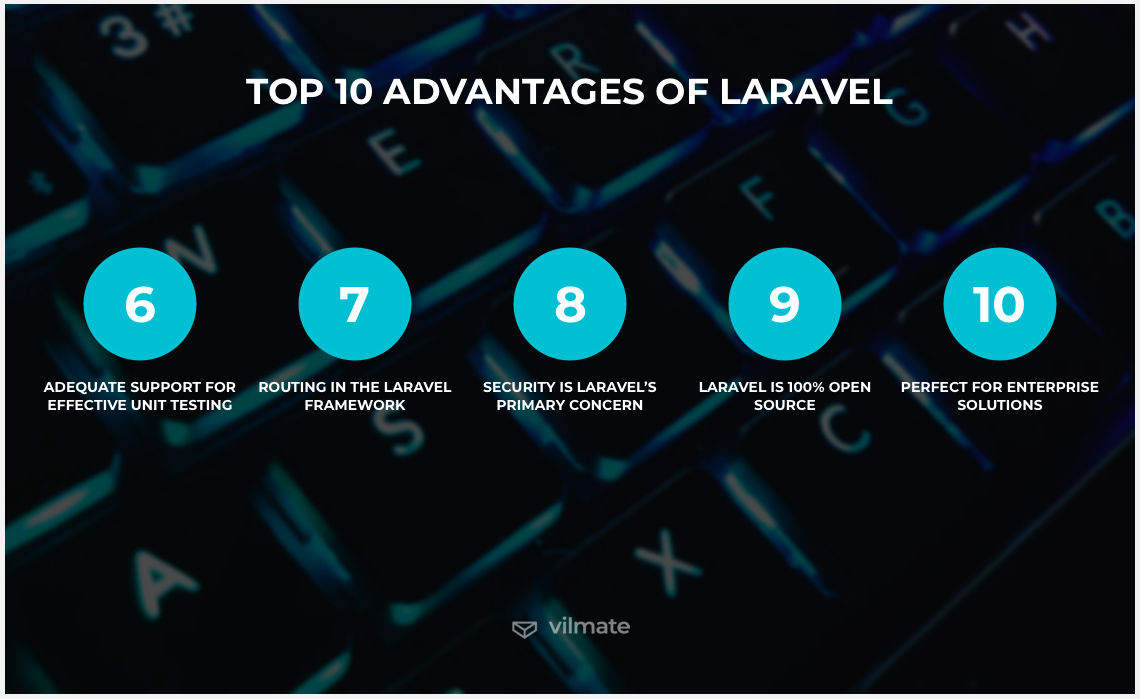
6. Adequate support for effective unit testing
Unit tests are much less problematic to run against your PHP code with Laravel. The framework supports a testing feature out of the box. It contains tests that detect and prevent regressions in the framework and, notably, unit tests can be executed through the provided Artisan command-line utility that we’ve discussed above.
Essentially, Laravel comes with a specific set of features that allow performing unit tests through PHPUnit, a well-established unit testing package for PHP. After the phpunit.xml file is automatically set up for performing unit testing, Laravel runs tests on the directories called Feature and Unit. The former is for larger codebases containing several objects, while the latter is for small portions of code. By performing unit testing through the PHP Unit, Laravel developers can explicitly evaluate specific web app features. With Laravel, developers don’t have to rely on third-party tools to effectively execute Feature and Unit testing as they both are natively supported and therefore, can be constantly kept under observation, which is important for software quality control.
Not only has Laravel official packages that are useful for integrating different features in the application but also developers can define custom test methods according to specific testing requirements. They are free to set up functions that can help create more advanced unit tests. With Laravel time-consuming unit tests writing becomes less of a hurdle. Laravel’s testing features that are appropriately used make PHP apps bug-free and highly performant.
Given the fact that Laravel can run multiple unit tests simultaneously to make sure all your new changes are adequately tested. Considering all said, we may conclude that testing with Laravel will cost you less compared to other PHP frameworks, and its unit testing features will empower web developers to build scalable business apps faster and, therefore, within a budget.
7. Routing in the Laravel framework
Basically, every time a server receives a request, a specific action is triggered to handle it. This process is known as routing. And to tell the truth, routing in Laravel is amazing.
First of all, Laravel’s code for routing is quite intuitive. It is clean and simple, especially when compared to the code used in other frameworks for The route can be initiated in the application with a sufficient level of flexibility and control to match the URL. This adds to the expressiveness and simplicity of how routes are defined.
One can also name routes, group routes, bind route models to automatically inject model instances or request parameters, create resources for CRUD pages, and attach filters. Besides, Laravel supports HTTP middleware that is critical when it comes to adding additional layers to the HTTP route. Using this middleware, one can optimize the communication between the web server and a PHP application without involving other third-party tools.
8. Security is Laravel’s primary concern
User authentication, password management, user log-in and sign-up, data encryption, and route protection are all the focus of Laravel’s security measures.
As web app security remains one of the major worries that businesses face, the creators of the technologies that are usually used for the development of such apps respond to this concern ungrudgingly with some useful security functionality. Thus, for example, Laravel has a number of built-in features that help development teams fight against online threats.
Laravel makes it possible to protect the integrity of the code and the application. It prevents outsiders from unauthorized access by generating a CSRF (cross-site request forgery) token each time a login request is received. Also, Laravel comes with a built-in encryption mechanism. Namely, it uses the Hash facade that provides a secure way for creating and storing passwords via bcrypt hashing algorithm application.
In order to provide businesses with an extreme level of protection, helping them to avoid injection attacks, Laravel uses predefined SQL statements, thus keeping websites and web apps free from injection attacks.
9. Laravel is 100% open source
The first thing you learn about Laravel when you google it is that this framework is proud to be an open-source project. This is a lot, indeed, and here is why.
The property of being open-source grants the following benefits to this technology users:
- Full transparency and collaboration on the development
- Support of a dedicated Laravel developer community
- New modules and plug-ins are installed at regular intervals
- Elimination of any ambiguities when needed
- Great tutorials designed by a vast and growing community
- Much more room for customization, modification, and extension than in other frameworks
- Access to the sought-for solutions to encountered problems provided by the Laravel experts worldwide
Therefore, it becomes much clearer why developers tend to choose Laravel over other available options. Laravel not only offers a set of comprehensive features but also there is a strong community whose support is invaluable when it comes to customizing web applications as per client requirements.
10. Perfect for enterprise solutions
Laravel is designed with some perks in mind that give a PHP developer the flexibility to create everything from small websites to massive enterprise applications. This is a brief overview of why developers would love to build enterprise applications using Laravel:
-
Laravel features a vibrant ecosystem of robust functionalities that help bolster enterprise software projects
-
It takes advantage of routing to access a traditional relational database like MySQL and uses built-in tooling to supports such interactions
-
The Laravel framework is headed towards expressive, elegant syntax
-
It has an extensive library of various plugins and modules that allow developers to be fast and high performing at all times
-
Laravel offers features that aid in your PHP web app deployment and management
-
This PHP framework is of great help to those developers who are in search of a less challenging way of handling an authentication process
-
Laravel empowers businesses to get dynamic software developed faster and at a lower price
Conclusion
The MVC pattern support, object-oriented libraries, command-line interfaces, a powerful templating engine, the built-in ORM implementation, streamlined unit testing, route protection, and attention to security in software design are some highly featured benefits of Laravel that make it one of the best PHP frameworks for websites and web apps.
If it all sounds convincing enough for you, we recommend you to give careful consideration to this idea and, keeping the things said above in mind, hire the most experienced and qualified Laravel developers for your project. Only then will you be in a position to take advantage of all the mentioned features of the framework. Our team at Vilmate will be more than happy to assist you along the way and help find the best people to augment or constitute your team to build an awesome PHP web application together!
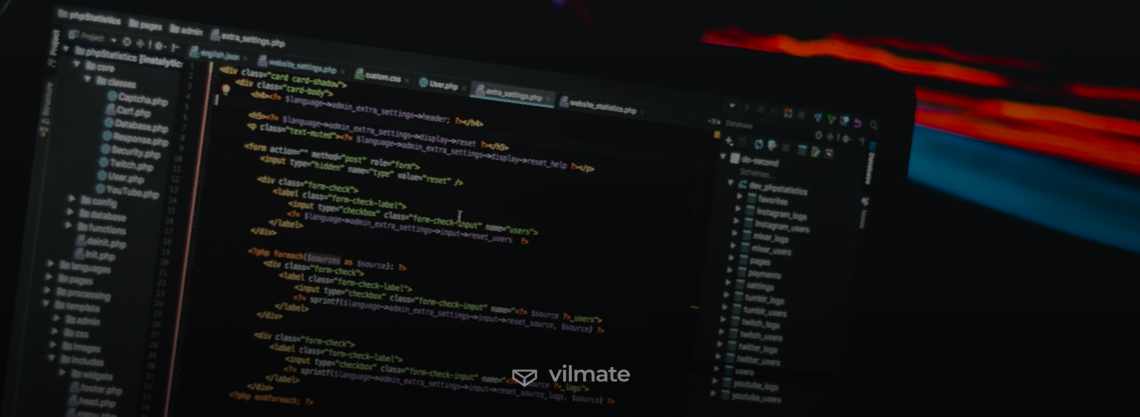
© 2020, Vilmate LLC

